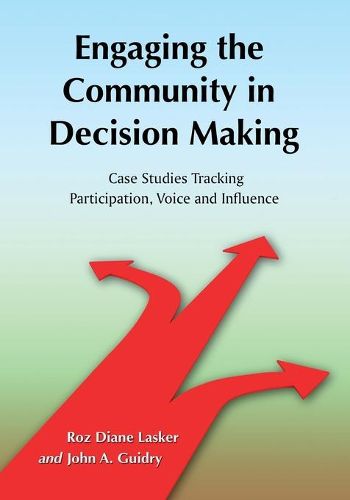Readings Newsletter
Become a Readings Member to make your shopping experience even easier.
Sign in or sign up for free!
You’re not far away from qualifying for FREE standard shipping within Australia
You’ve qualified for FREE standard shipping within Australia
The cart is loading…






This title is printed to order. This book may have been self-published. If so, we cannot guarantee the quality of the content. In the main most books will have gone through the editing process however some may not. We therefore suggest that you be aware of this before ordering this book. If in doubt check either the author or publisher’s details as we are unable to accept any returns unless they are faulty. Please contact us if you have any questions.
In recent years, the rapidly growing field of community participation has promised to give people formerly excluded from decision making an influential voice about issues that affect their lives. Inclusive processes implemented in the United States and internationally have certainly given community members new opportunities to participate and be involved, but how effective are these processes in promoting the voice and influence of the people who have historically been excluded the most - the poorest, least educated, and most marginalized residents in communities? Of the various participants who have ‘a seat at the table’, whose voices are influential, whose aren’t, and why? This book summarizes how five community partnerships, working with a team of researchers, attempted to answer these critical questions. Investigating 10 cases - two from each community partnership - the study tracks the ideas of everyone involved and reveals how and why the ideas of marginalized and ordinary residents were far less likely to be influential than those of people with more clout, resources, or acknowledged expertise. Finally, the authors explain how and why these influence inequities can be overcome, providing readers with practical, evidence-based tools to help them do so. The book should be helpful to readers involved in any form of active community participation, from participatory research to civic engagement, deliberative democracy, and community initiatives.
$9.00 standard shipping within Australia
FREE standard shipping within Australia for orders over $100.00
Express & International shipping calculated at checkout
This title is printed to order. This book may have been self-published. If so, we cannot guarantee the quality of the content. In the main most books will have gone through the editing process however some may not. We therefore suggest that you be aware of this before ordering this book. If in doubt check either the author or publisher’s details as we are unable to accept any returns unless they are faulty. Please contact us if you have any questions.
In recent years, the rapidly growing field of community participation has promised to give people formerly excluded from decision making an influential voice about issues that affect their lives. Inclusive processes implemented in the United States and internationally have certainly given community members new opportunities to participate and be involved, but how effective are these processes in promoting the voice and influence of the people who have historically been excluded the most - the poorest, least educated, and most marginalized residents in communities? Of the various participants who have ‘a seat at the table’, whose voices are influential, whose aren’t, and why? This book summarizes how five community partnerships, working with a team of researchers, attempted to answer these critical questions. Investigating 10 cases - two from each community partnership - the study tracks the ideas of everyone involved and reveals how and why the ideas of marginalized and ordinary residents were far less likely to be influential than those of people with more clout, resources, or acknowledged expertise. Finally, the authors explain how and why these influence inequities can be overcome, providing readers with practical, evidence-based tools to help them do so. The book should be helpful to readers involved in any form of active community participation, from participatory research to civic engagement, deliberative democracy, and community initiatives.